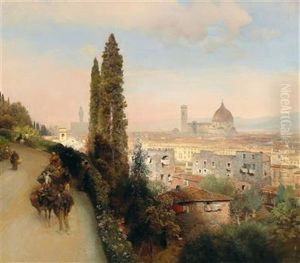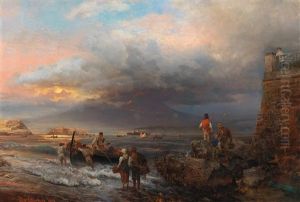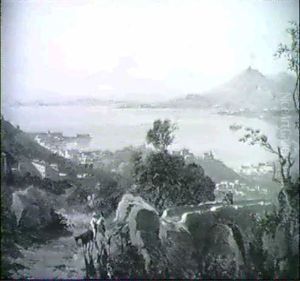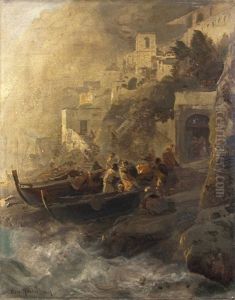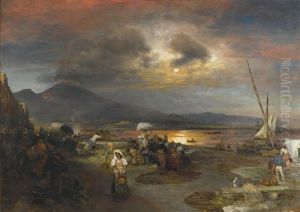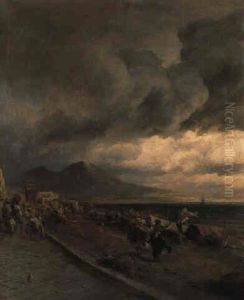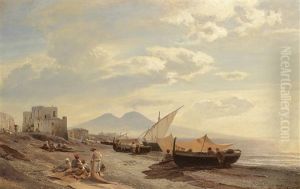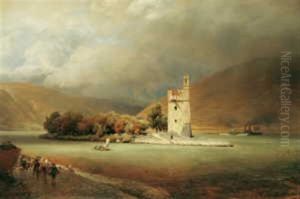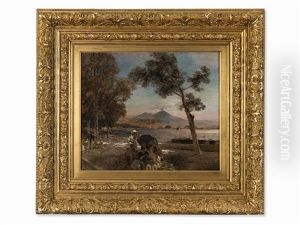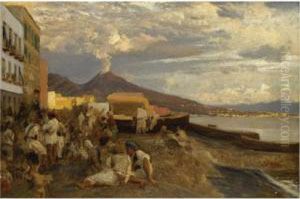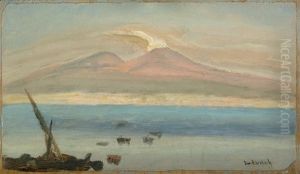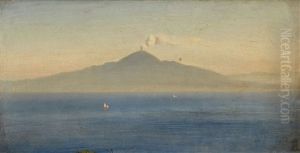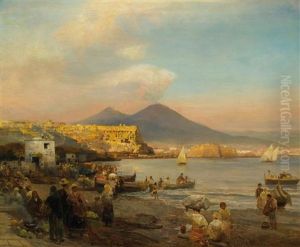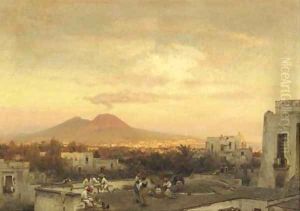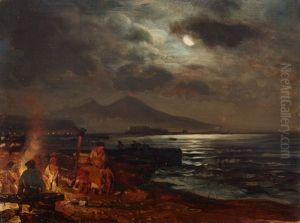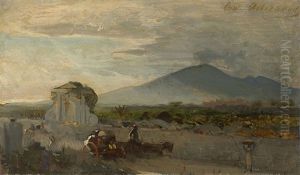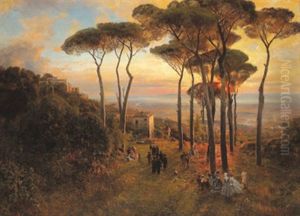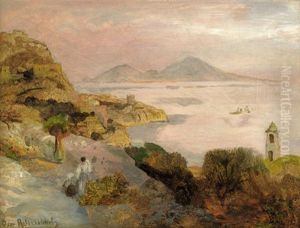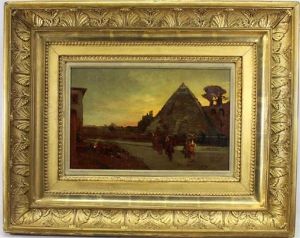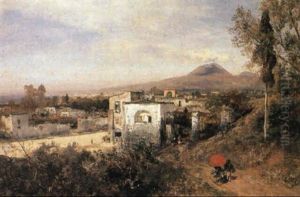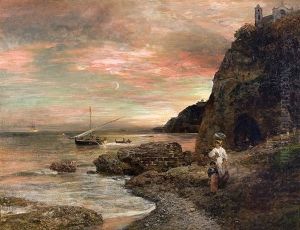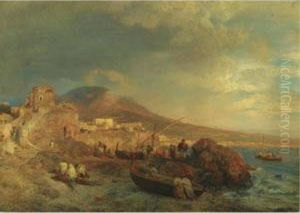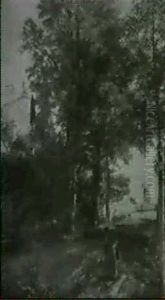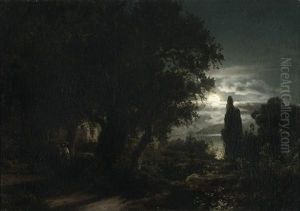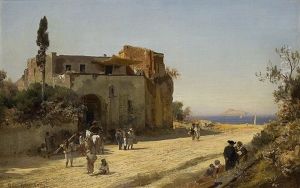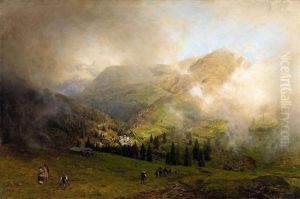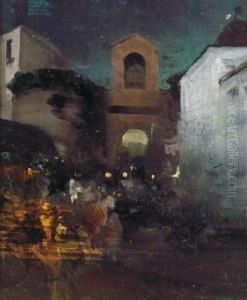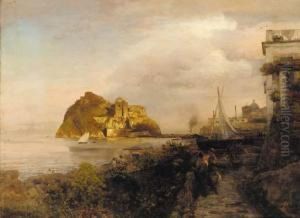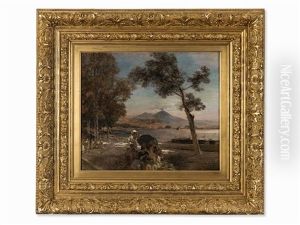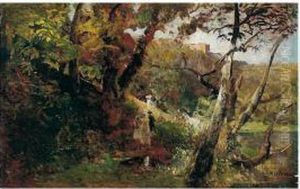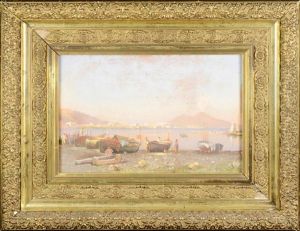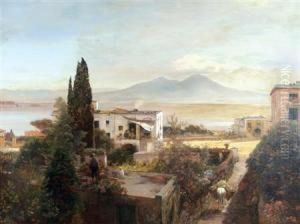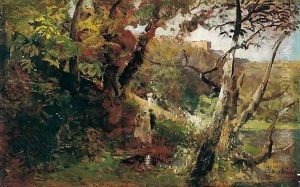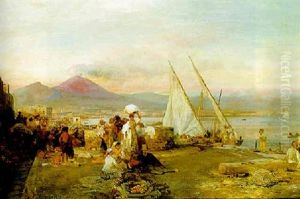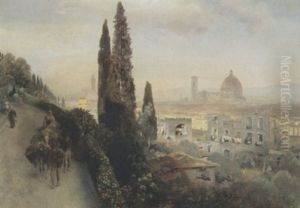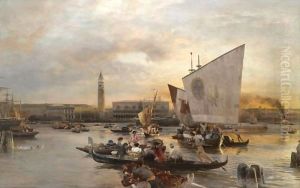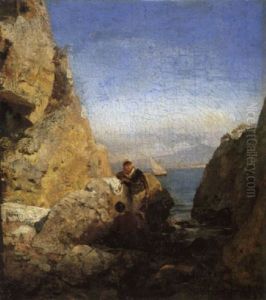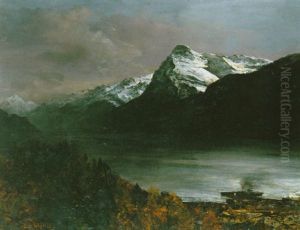Oswald Achenbach Paintings
Oswald Achenbach was a German painter associated with the Düsseldorf school of painting. Born in Düsseldorf on February 2, 1827, he was part of a family deeply involved in the arts; his brother, Andreas Achenbach, was also a prominent landscape painter. From an early age, Oswald showed a profound interest in art, encouraged by his family's artistic environment. He began his formal education at the Düsseldorf Academy of Arts at the age of 11, studying under various teachers, including Johann Wilhelm Schirmer, a landscape painter who significantly influenced his early work. Oswald Achenbach's career was marked by a fascination with the landscapes and cultures of Italy, a theme that would dominate much of his oeuvre. After his first visit to Italy in 1843, Achenbach's style evolved from the precise and detailed landscapes characteristic of the Düsseldorf school to embody a more atmospheric and dynamic approach. This change was partly due to the influence of the Italian environment and partly to his exposure to other artists in Italy, including members of the Nazarene movement. His works from this period are celebrated for their dramatic lighting, vivid colors, and emotional depth, distinguishing him from his contemporaries. Throughout his career, Achenbach received numerous accolades and was a member of various prestigious art societies across Europe. He was particularly admired for his ability to blend naturalism with romantic sentiment, creating landscapes that were both realistic and imbued with a sense of the sublime. Despite his success, Achenbach was known to be critical of the academic constraints of the Düsseldorf school, advocating for a more flexible approach to art education and practice. Achenbach's influence extended beyond his immediate circle through his teaching at the Düsseldorf Academy, where he mentored a generation of artists, imparting his understanding of landscape painting and the importance of direct engagement with nature. Oswald Achenbach died on February 1, 1905, in Düsseldorf, leaving behind a legacy that significantly impacted 19th-century landscape painting. His work continues to be celebrated for its contribution to the romantic landscape genre and its enduring influence on the development of modern art.
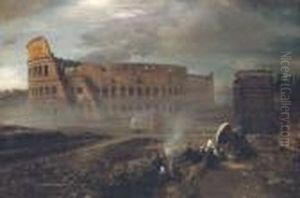
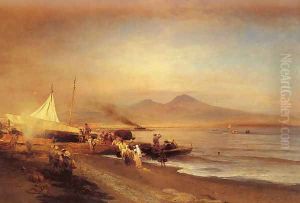
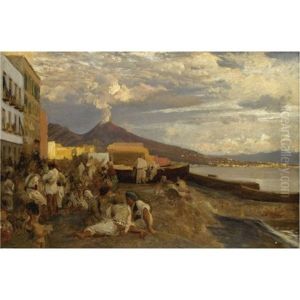
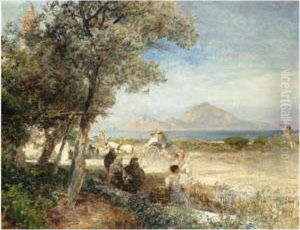
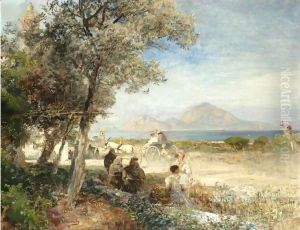
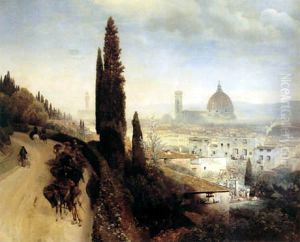
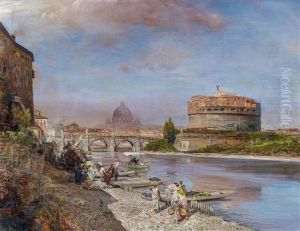
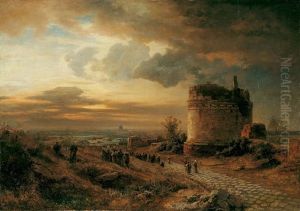
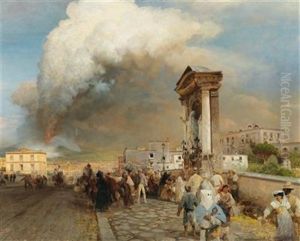
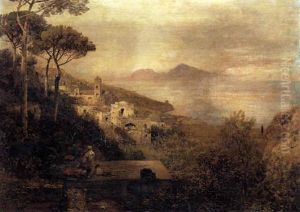
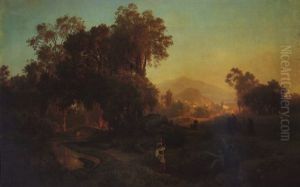
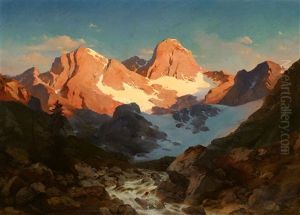
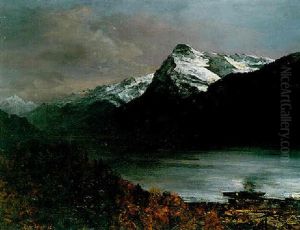
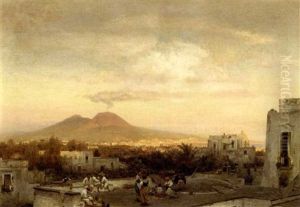
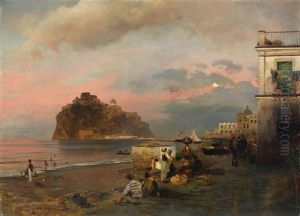
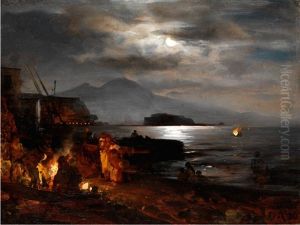
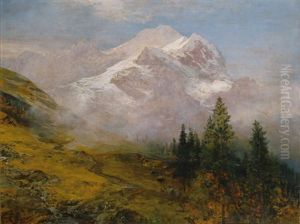
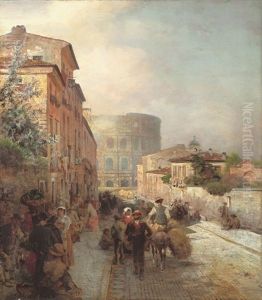
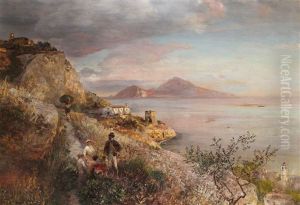
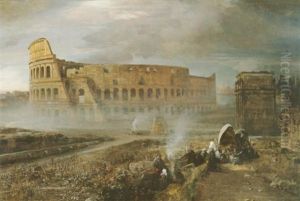
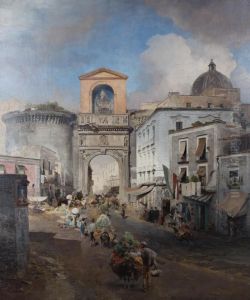
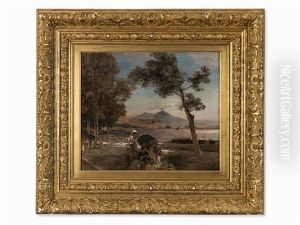
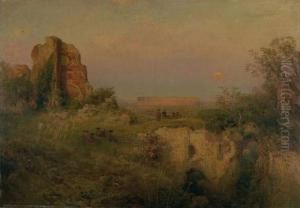
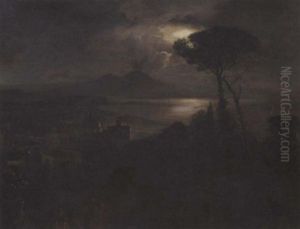
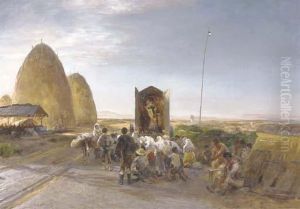
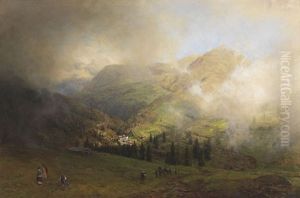
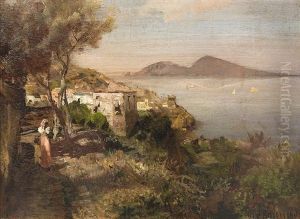
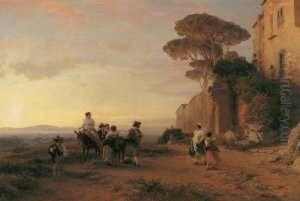
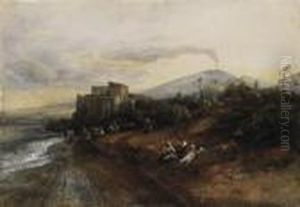
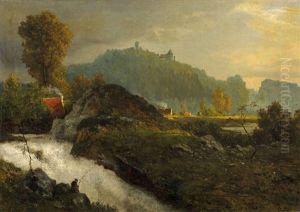
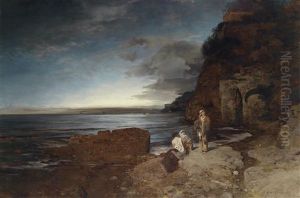
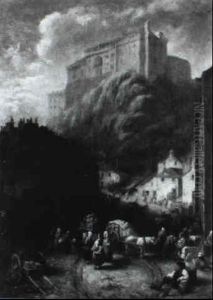
![Vue De Naples Au Soleil Couchant
[ ; View Of Naples, Sunset ; Oil On Canvas ; Traces Of Signature Under
An Added Signature Osw Achenbach]](https://www.niceartgallery.com/imgs/1717677/s/oswald-achenbach-vue-de-naples-au-soleil-couchant-view-of-naples-sunset-oil-on-canvas-traces-of-signature-under-an-added-signature-osw-achenbach-2dcc19a9.jpg)
